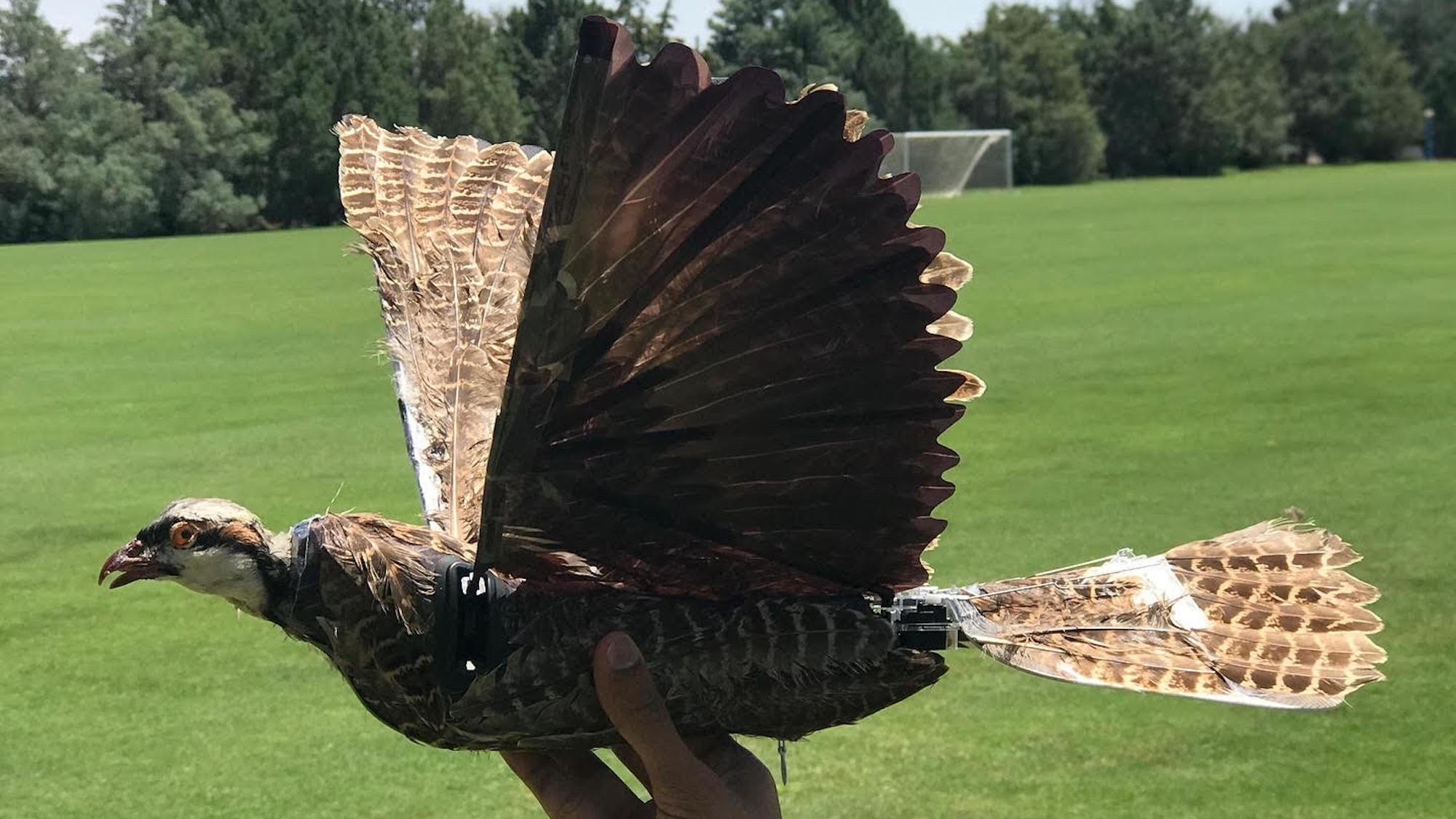

Why spend all that time building and fine tuning robots that mimic birds when you can just…stuff robots in dead birds’ bodies? It’s hardly that simple, but a recent project courtesy of Mostafa Hassanalian and their fellow New Mexico Tech colleagues put the peculiar idea to the test.
The team, who presented their work in late January at the American Institute of Aeronautics and Astronautics’ SciTech Forum, designed new systems reliant on taxidermy bird parts and artificial wing setups to mirror their (formerly living) avian inspirations. As New Scientist also highlighted on Tuesday, Hassanalian’s group technically built two dead bird bots—one fusing artificial body parts with an actual pheasant’s head and feathers, as well as a mechanical body combined with real pigeon wings.
[Related: Watch this bird-like robot make a graceful landing on its perch.]
The techno-taxidermy models, perhaps unsurprisingly, lag considerably behind their living counterparts’ maneuverability, speed, and grace. Currently, however, the feathery drones can glide, hover in place, and soar higher on hot thermal currents—just don’t expect them to do anything elegantly just yet, judging from video supplied to PopSci by Hassanalian.

The uncanniness of robot birds flying arount may not be much of an issue for the new designs’ potential usages, anyway. The research team’s paper notes that future models could hypothetically be used as “spy drones for military use,” although Hassanalian makes it clear in an email that this is far from its foremost goal of “developing a nature-friendly drone concept for wildlife monitoring.” Traditional drones are often disruptive to ecosystems due to issues such as sound and unfamiliarity, so developing quieter, natural-looking alternatives could help wildlife monitoring and research.
[Related: Reverse-engineered hummingbird wings could inspire new drone designs.]
Hassanalian also notes there are potential biological discoveries to be found in mimicking bird movement. For example, figuring out how actual birds conserve energy while flying in V-formations or the role that feather colors and patterns may affect heat absorption and airflow.
Of course, any plans will require a bit more delving into the ethics and research guidelines for using deceased birds in future tinkerings. And before you ask—don’t worry. Hassanalian’s team worked with a nearby taxidermy artist to source the drones’ natural components. No real birds were physically harmed in the making of the drones. But it remains to be seen if any living animals will suffer psychologically from potentially seeing their cyborg cousins snapping spy photos of them one day.
